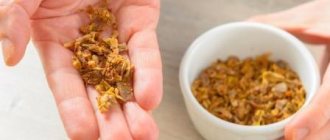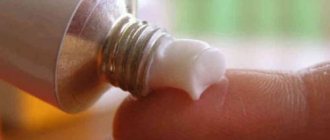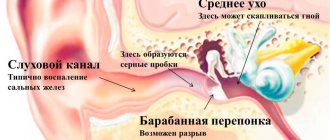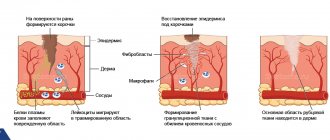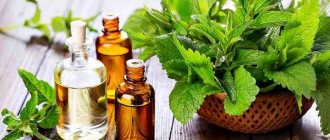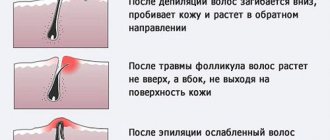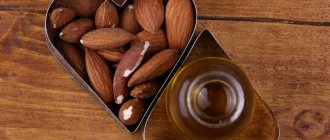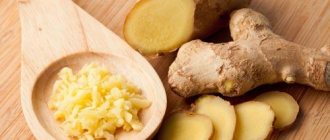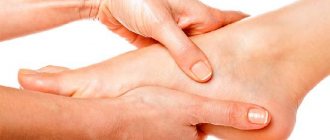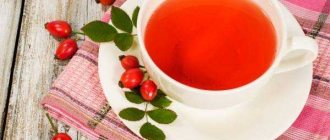No one is safe from soft tissue bruises. It is impossible to predict when you might trip, hit a corner, or drop a heavy object on your foot. Athletes, tourists, fans of an active lifestyle often encounter bruises and contusions of various parts of the body. The number of falls in icy conditions is in the thousands.
Despite the fact that the problem of hematomas, bruises, and swelling after a blow is familiar to most people, not everyone knows the rules of first aid and further treatment of bruises. Fill the gap, learn the rules for treating bruises and bumps. Then you won’t have to suffer from unbearable pain and “show off” with blue or yellow-green spots for a long time.
Some useful information
What happens with bruises:
- the skin, muscle tissue, and subcutaneous fatty tissue are damaged;
- bone tissue in most cases remains intact;
- vessels and capillaries are often injured;
- after local hemorrhage, the bruise site swells and pain is felt;
- the stronger the blow, the larger the area of subcutaneous hemorrhage;
- not finding a way out, the blood spreads into neighboring tissues - a hematoma is formed;
- penetration of blood into the cavities located near the site of the bruise causes hemarthrosis. Joints are affected;
- The color of the bruise changes from red to purple, sometimes almost black. Next, the bruised area becomes green, then yellow-green;
- the shade will help determine the age of the injury.
Note! Unbearable pain may indicate bone damage. Be sure to visit a traumatologist and get an x-ray. Local remedies will only relieve the pain a little, but later seeking medical help will push the problem deeper. The consequences are suppuration on the bones, a serious inflammatory process.
Ointment for bruises on the body: why and how to use
Ointment for bruises on the body can quickly eliminate hematomas, swelling, and pain. Each remedy has specific properties and should be used in targeted therapy.
| Drug name | Indications | Price |
| Express bruise | Already existing hematomas or a high probability of their formation | Within 100 rubles |
| Indovazin | Swelling, pain, signs of inflammation at the site of injury | 180-250 rubles |
| Bruise-off | Bruises, swelling after injuries | About 100 rubles |
| Ointments with arnica (Viateka, Arnica DN, Arnica GF, Arnigel) | Hematomas, pain and swelling at the site of injury, sprained ligaments/tendons | 40-170 rubles depending on the manufacturer |
| Heparin ointment | Injuries, bruises of muscles, soft tissues, tendons, the presence of point and extensive hematomas | 60 rubles |
| Troxerutin, Troxevasin | Swelling and pain in places of bruises | 30-170 rubles |
| Ointments with dexpanthenol (Allantoin, Dolobene, Venolife and others) | Pain, swelling, bruises in places of injury, bruises | 220-300 rubles |
| Ointments with bodyaga, comfrey (larkspur balm, Dr. Tyson's comfrey) | Hematomas of various sizes, sprains, pain in places of injury | 70-150 rubles |
| Finalgon | Improving blood microcirculation, reducing swelling | 250-280 rubles |
| Ekfamon | It has a warming effect, quickly relieves pain, reduces the intensity of swelling and the severity of bruises | 100-140 rubles |
| Diclofenac - ointments based on it: Ortofen, Diclak, Voltaren and others | Relieves inflammation, eliminates pain | 40-170 rubles |
| Products based on Ibuprofen - Dolgit cream, Nurofen gel | Has anti-inflammatory and analgesic effects | 30-140 rubles |
| Special lubricant | Swelling, skin damage in places of injury, hematoma, pain | 55-80 rubles |
| The power of the forest and Zorka | To accelerate healing as an adjuvant therapy | 500 rubles and 60 respectively |
What to apply to a tailbone injury
If a tailbone bruise occurs, doctors believe that it is better to smear the injured area with Troxevasin and Indomethacin ointments. The situation can happen not only to a professional athlete, but also to an ordinary person. The drugs will help relieve the pain, but if after 2-3 days it does not stop, but only intensifies, and it is difficult for a person to walk and even turn over in bed, then you should definitely visit a doctor.
Troxevasin
The main active ingredient of the drug is troxerutin, which has the following properties:
- relieves swelling;
- stops the inflammatory process;
- strengthens the walls of small blood vessels.
Troxevasin
Apply 2 times a day to the coccyx area, rub with light movements into the skin. Side effects such as urticaria (allergic reaction), dermatitis, severe itching and burning may occur.
Indomethacin
It has anti-inflammatory, analgesic, anti-edematous effects, quickly eliminates redness at the site of a bruise, and prevents the formation of extensive hematomas. This drug belongs to the category of non-steroidal anti-inflammatory drugs, so the patient’s age and contraindications to the use of the ointment must be taken into account.
Apply the ointment 1-2 times a day directly to the site of the injury.
Indomethacin
A coccyx bruise is a rather unpleasant and long-lasting injury, so therapy can last 2-3 weeks. Indomethacin is not recommended for use for so long - 7-10 days of regular application are enough, after which you should limit yourself to Troxevasin.
Heparin ointment for bruises
Heparin ointment is considered an ideal choice for the treatment of bruises; it contains:
- heparin – has an antithrombic effect;
- benzyl ester of nicotinic acid - dilates blood vessels, ensures complete absorption of heparin;
- benzocaine is an anesthetic substance.
The drug is indicated for the treatment of bruises, which are accompanied by the formation of extensive and pinpoint (small) hematomas and edema. Apply a thin layer to the damaged area of the body 2-3 times a day - a 2-4 cm strip of ointment is enough for a five-centimeter area of the bruise. The duration of treatment is a maximum of 7 days, but already on the 3-4th day the unpleasant symptoms of the injury disappear, you can interrupt the therapy Heparin ointment.
The drug is contraindicated in cases of excessive sensitivity/intolerance to components, open wounds, existing trophic/ulcerative processes on the skin, previously diagnosed vein thrombosis. It is strictly forbidden to use Heparin ointment simultaneously with any non-steroidal anti-inflammatory drugs, tetracycline antibiotics, or antiallergic drugs.
On the 5th day of therapy, side effects such as severe redness of the skin, burning sensation and classic allergies (urticaria) may appear.
Vishnevsky ointment
Tar, castor oil and xeroform are components of the drug that have anti-inflammatory and antiseptic effects. Tar has a beneficial effect on the functioning of the vascular system, namely, it accelerates blood circulation. The result is:
- rapid resolution of swelling;
- resorption of bruises, even extensive ones and with compactions;
- stopping/preventing the development of the inflammatory process.
Vishnevsky ointment
Vishnevsky ointment is the only remedy that can be used even on open wounds on the skin. It is applied 2 times a day to the site of injury in the form of a compress - a thick layer of the drug is placed on a gauze napkin, the pathological focus is covered with it, polyethylene (paper for compresses) and a towel, scarves, and a scarf are placed on top. The holding time for this “pie” is 1-2 hours. You can apply Vishnevsky ointment all night.
It is extremely rare that the drug causes allergic reactions, but with prolonged use, redness of healthy tissues (located around the site of the bruise), itching and burning sensation are possible.
Diclofenac
Diclofenac is a non-steroidal anti-inflammatory drug that is included in ointments/gels for bruises:
- Dicloran;
- Voltaren;
- Ortofen;
- Diclogen;
- Diclofenacol.
Diclofenac Diclogen Ortofen Diclofenacol Voltaren Dicloran
The drugs quickly relieve pain, promote rapid healing of soft tissues, and are especially effective for sprained ligaments/tendons. Ointments/gels containing diclofenac are applied to undamaged areas of the body (no open wounds), applying a bandage is not implied.
The duration of therapy with such drugs should not exceed 10-14 days. Non-steroidal anti-inflammatory drugs cannot be used even externally if you are simultaneously taking diuretics, cyclosporins, antidiabetic drugs, Digoxin - consultation with your doctor is necessary.
Sports ointment
We are talking about ointments and gels that are used by athletes, since they are the ones who are more often exposed to bruises and injuries. It is believed that such drugs should have not only analgesic and decongestant properties, but also efficiently and quickly cool the site of injury. And they have these abilities:
- Gevkamen gel;
- Fast Relief;
- Albas.
Fast Relief Olbas Gevkamen gel
The drugs have a powerful analgesic effect, prevent the development of inflammation of soft tissues, and promote rapid resorption of hematomas. Due to the fact that menthol is present in the composition, the site of injury is cooled, which allows the athlete to continue to lead an active lifestyle without interrupting his training.
In addition to the listed drugs, sports drugs include Bystrumgel, Deep Relief, Dexpanthenol, Indovazin, Nise gel, Finalgon, Espol and others. They are used on the 2nd day after injury, because first aid is the application of a cold compress and (if necessary) a pressure/fixing bandage. The duration of therapy with the listed drugs is 7 days, but usually by the 3rd day the unpleasant symptoms become less pronounced.
Bystrum gel Nise gel Finalgon Espol Indovazin Deep Relief
Doctors warn that if the condition does not improve within 3 days of using ointments for bruises, then you need to seek qualified medical help. Perhaps a more serious injury will be identified - dislocations, displacement of the vertebrae, joint injuries, and so on.
Universal balm for bruises, sprained joints, fingers
The universal balm for bruises and sprains is Rescuer, which consists only of natural ingredients, does not contain chemical ingredients, fragrances or fragrances, and therefore almost never causes allergic reactions. The balm restores the regenerative abilities of the skin and soft tissues, normalizes blood flow, and accelerates the functioning of the lymphatic system. It also has an analgesic, anti-inflammatory, and anti-edematous effect.
The rescuer has no contraindications and can be used at any age and for a long time. The balm is applied to the site of a bruise or sprain 2-3 times a day in a thick layer and, if the manipulation does not add unpleasant sensations, rubbed into the skin with massage movements until completely absorbed. Treatment can be continued until a lasting result of recovery/recovery is achieved.
Watch this video about the composition and rules for using Rescuer balm:
Is it possible to apply warming ointment to a bruise if you have a back or shoulder injury?
It is possible and even necessary to smear a bruise with a back or shoulder injury with warming ointments - they will not only have a therapeutic effect, but will also become an excellent distraction - even severe pain will become less pronounced. These drugs include:
- Espol - contains hot pepper extract;
- Finalgon - the main active ingredients are nonivamyl and nicoboxil;
- Efkamon - characterized by the presence of a large number of natural ingredients: eucalyptus oil, mustard oil, clove oil, hot pepper tincture, camphor;
- Apizartron is made from bee venom.
Efkamon Apizartron
Warming ointments significantly accelerate blood flow, therefore they are contraindicated for any diseases of the heart and blood vessels: disruption of the blood clotting system, persistent high blood pressure, myocardial infarction, hypertensive crisis, history of strokes.
Ointment for bruises during pregnancy
During pregnancy, the only ointment that can be used for bruises is Heparin. It will quickly relieve a woman of hematomas, slow down the development of the inflammatory process and, by accelerating blood microcirculation in the vessels, ensure the removal of toxins and supply of soft tissues with oxygen and essential nutrients. Any other ointments are prohibited because:
- warming provokes an increase in blood pressure;
- cooling with menthol may cause an allergic reaction;
- Non-steroidal anti-inflammatory drugs have a negative effect on fetal development.
Even Heparin ointment cannot be used for a long time. If positive dynamics are not observed within 3 days, then you need to immediately see a doctor and find out the true state of health (joint injuries, cracks in the bones, and displacement of the vertebrae can be diagnosed).
Basic recommendations for use
The ointments should be used as follows:
- after the primary acute symptoms of a bruise (sharp pain, spreading swelling) become less pronounced from a cold compress, you can apply the selected ointment for the first time;
- the drug is used in small quantities - a maximum of 4 cm of tape, if the area of the bruise does not exceed 5 cm; for warming ointments, a 1 cm tape is sufficient;
- the ointment/gel/balm should be rubbed into the skin.
Manipulations for applying the product are carried out 2 times a day; only Vishnevsky ointment can be used on open wounds. The duration of therapy is 7-10 days, but usually bruises, swelling and pain disappear within 3-5 days.
Watch this video about what to do if you are bruised:
Contraindications to NSAID ointments
Ointments from the category of non-steroidal anti-inflammatory drugs are generally extremely undesirable to use independently, without a doctor’s prescription. As a last resort, you need to know in which cases such therapy is strictly contraindicated:
- children under 7 years of age;
- bronchial asthma;
- polyps in the nasal passages;
- diseases of the gastrointestinal tract that occur in severe form - for example, peptic ulcer with frequent bleeding;
- allergies in the form of rhinitis (runny nose), urticaria;
- severe dysfunction of the liver and kidneys;
- pregnancy and breastfeeding period.
First aid for bruises
What to do if you are injured? How to minimize the consequences? How to prevent the appearance of extensive hematomas?
For bruises of the tailbone, fingers, arms, legs, feet, knees, ribs and head, act correctly:
- Rest the bruised area. Keep your arms and legs in a natural position. If possible, lie down and try to move less;
- make sure that the bruised area is above the heart area;
- Apply something cold to the impact area as quickly as possible. Your task is to reduce swelling and stop the “spreading” of the hematoma. The ideal remedy is ice wrapped in a cloth, a cold compress made of wet gauze or a terry towel;
- Can't make a compress? Use any means at hand: scrape snow from the freezer, pack it in cellophane. Apply a cold bag of kefir or sour cream, a bottle of water, a cold egg, a can of canned food, or anything that will have a low temperature to the bruised area. One condition is that the item must be clean;
- if there is no ice, place the limb under cold water, hold the bruised area for 5–7 minutes under a gentle stream;
- cool the sore spot for 15–20 minutes, no more, otherwise tissue necrosis will begin. You just need to reduce the speed of blood circulation, stop internal hemorrhage;
- After removing the cold compress, gently blot the area and apply pharmaceutical preparations. It’s good if you have a tube of gel or ointment for bruises in the refrigerator. Folk remedies effectively resolve hematomas.
Forbidden:
- drink alcohol, which dilates blood vessels;
- massage the bruised area;
- move actively;
- warm the hematoma. Heat is recommended after two days, but not earlier than 24 hours.
In case of severe bruises to the eyes and brain, contact a specialist immediately.
Remember! The sooner treatment is started, the smaller the area the hematoma will cover.
Failure to comply with first aid rules will complicate recovery. A cold compress applied a day after a bruise is absolutely useless.
Remedies for bruises
After providing first aid, it is important to know how to treat bruises at home. The goal is to reduce swelling, bruising and pain. Depending on the condition, the patient may be prescribed medications for internal or external use. The latter include compresses, which significantly accelerate the healing and resorption of bruises. They are represented by traditional medicine recipes, so it is better to use such methods at home in conjunction with basic therapy.
- How to enlarge breasts at home for a girl
- How to congratulate a girl on her birthday
- Recipe for nuts with boiled condensed milk in a nut bowl
Compress
This procedure consists of applying certain ingredients to the site of the injury, most of which are present in the kitchen of any housewife. For effectiveness, it is recommended to repeat it three times a day. Any of the compositions is applied to the damaged area, then bandaged or simply pressed with some kind of cloth. The list of the most effective folk recipes includes:
- aloe compress with honey;
- cabbage leaf, pierced in several places;
- chopped boiled beans, which are applied warm to the bruise;
- cold compress of ice;
- plantain crushed to a pulp;
- tea leaves;
- bread crumb soaked in milk.
Medicine
After providing first aid after a bruise, you need to continue to treat them, but with special medications. There are several groups of medications that are used against such injuries:
- hematoma-absorbing ointments and gels based on heparin (Troxevasin, Spasatel, Lyoton);
- vasodilating ointments – Capsicam, ArpizatronYu;
- analgesic and anti-edema enzyme preparations - Wobenzym, Flogenzym;
- non-steroidal anti-inflammatory drugs that relieve swelling and pain - Fastum, Deep Relief, Indovazin.
Painkillers
Separately, it is worth noting the group of painkillers. They are presented in capsules or tablets. In terms of safety and effectiveness, Paracetamol, Ibuprofen, Analgin, Ketanov, Diclofenac come first. They can be taken immediately after a bruise to avoid shock and for several days after the injury according to the sensations, if the pain is too severe.
Patch
Of all the methods describing how to treat a bruise, the Nanoplast patch has especially good reviews. It comes in different sizes and works after being glued to the skin. It is often used for a variety of injuries, even by athletes. The patch has anti-inflammatory, analgesic and regenerating effects. The drug is convenient because it is easy to always keep with you, so you can stick the strip on at any time. The patch should not be applied to open wounds or used during pregnancy.
Further treatment
After 48 hours, the methods of control change radically:
- You will need a warm compress, not a cold one. Heat relieves pain, irritation, restores blood circulation;
- An excellent remedy is a warm, but not hot, bath. During the procedure, clots dissolve due to the restoration of blood microcirculation;
- massage. Lightly massage the sore area. Proceed without pressure; in case of pronounced pain, postpone the procedure to a later date;
- Simple exercises will help improve blood circulation. For bruised limbs, strain and relax the muscles at the site of the impact;
- continue treating the affected areas with home remedies for bruises, ready-made formulations.
How to remove expression wrinkles on the forehead? Find out the most effective methods.
The first signs and symptoms of systemic lupus erythematosus are written at this address.
Effect of ointments
How does ointment for a bruise affect the injury? Let's consider the main directions of action of creams and other products:
- Cream that improves blood circulation - the components present act on the area of \u200b\u200bthe bruise, irritating and warming the tissue, thereby improving blood circulation. Thanks to this, metabolic processes are accelerated, and the affected tissues heal quickly.
- Tumors or swelling, redness, pain in the kneecap and any other damaged area are the result of inflammation. To relieve this pathology, ointments containing anti-inflammatory components should be used.
- Injuries are accompanied by severe pain, which significantly affects the quality of life. It is necessary to relieve pain, therefore an effective ointment must contain analgesic or cooling components - cooling the tissues also gives an analgesic effect.
- Decongestant - swelling and swelling accompany most injuries and must be eliminated.
- Anticoagulants will help thin the thickened blood, this will significantly speed up the process of resorption of hematomas.
- When damaged, capillaries stretch, their walls become thinner and need strengthening. Therefore, the composition of ointments should include a component that affects and strengthens the walls of blood vessels.
- Muscle tension can occur when a leg is bruised and accompany an arm injury, developing into a spasm, which also causes pain. An ointment containing special components in its composition will also help to numb and relax muscles.
It is very easy to cope with bruises if the victim has an effective medicine at hand. With their help, they relieve pain and swelling after just a few days of use. But, do not forget that rapid recovery depends on the characteristics of the body. For some, the hematoma may go away in a couple of days, for others in a week or more.
Today there are a huge number of different medicines that fight bruises, these can be ointments, gels, balms. The cost of each of them is different; you can also find inexpensive ointment for bruises and vice versa.
Traditional methods and recipes
Before the advent of pharmaceutical drugs, people were saved by simple, accessible means. There are many proven compositions.
Choose:
- badyaga. One of the best natural remedies for bumps and bruises. Sponge powder is sold at any pharmacy. Dilute the greenish-gray powder with water in a 2:1 ratio. Apply the mixture and change the bandage twice a day;
- banana peel. If you don't have a cold compress, use a simple method. Peel the banana, hold the peel on the pine cone with the inner side;
- applying a nickel is an old, proven method. Wet the coin with cold water - the effect will increase;
- butter will help resolve bruises and bumps Lubricate the sore spot every half hour;
- ointment for bruises and bruises from hop cones. You will need 200 g of interior fat, 50 g of dried hop cones. Melt the fat, add the chopped raw materials, strain. The pain goes away quickly, the hematomas resolve well;
- combine 0.5 tsp. sea salt and ½ cup vinegar. Wet a napkin and hold it over the site of internal hemorrhage for 30 minutes;
- plantain. Wash the leaf, apply it to the cone, change it several times. The pharmacy sells plantain juice. Lubricate the sore spot;
- aloe. Tear off the fleshy leaf and cut lengthwise. Apply a whole leaf or a paste of pulp. Change every half hour;
- compress of birch buds and horsetail. Pour 1 tbsp. l. medicinal raw materials 250 ml of water, boil. After 40 minutes, strain and apply to the hematoma;
- mountain arnica. Wet gauze or napkin with healing tincture and apply several times during the day;
- cabbage. An ordinary cabbage leaf resolves bruises, relieves swelling, and reduces pain. If possible, place the leaf in the refrigerator, then on the affected area;
- wormwood for bruises. Take fresh stems, chop them, make a compress. Change two to three times a day;
- burdock ointment. Prepare the mixture and keep it in your refrigerator. Grind 75 g of roots, combine with 200 ml of vegetable oil. Let it brew for a day. Warm over low heat, strain. After removing the cold compress, apply the lubricant to the bump.
Treatment of bruises and hematomas at home
Every person at least once in his life has encountered bruises and abrasions on his body.
And if the damage does not cause discomfort, then it does not require special treatment. However, in some cases, a bluish swelling of considerable size forms at the site of the injury, which causes severe pain or even impaired muscle function. In this case, various ointments and gels are recommended to speed up recovery.
Traditional medicine is also strong in the treatment of hematomas. Therefore, recipes for folk and traditional medicine can be combined with each other.
We recommend reading: How to lighten hair using folk remedies
Traditional medicine
Traditional medicine includes medications that can be purchased at pharmacies.
The most effective means include:
- Bodyaga. It is a powder made from a freshwater sponge, which accelerates the resorption of hematomas. Bodyagu should be diluted with water, moistened with a piece of gauze and applied to the inflamed area. Leave for 60-90 minutes;
- Goulard. This product has excellent properties against bruises, and its cost is low;
- Iodine network. Every day before going to bed, it is necessary to apply an iodine mesh to the area of the hematoma. It improves blood circulation, so the hematoma resolves faster;
- Ointments for hematoma. The composition of such ointments should include heparin and bodyaga;
- Creams with vitamins. Accelerate metabolism and blood circulation. The active component of such creams is retinol;
- Heparin ointment. With regular use, the drug relieves pain, reduces swelling, resolves hematomas and relieves skin sensitivity. Recommended to use three times a day;
- Gels. You can also use widely advertised gels, for example, Troxevasin or Indovazin. They speed up the healing process by strengthening the capillary walls. It is recommended to use them in addition to ointments.
ethnoscience
Traditional medicine also provides excellent results in the treatment of hematomas.
The most effective recipes include:
- Cottage cheese. If you bruise your knee, it is effective to apply cottage cheese. It is advisable to use high-fat homemade cottage cheese. It is recommended to wear this compress all day. If the hematoma has not completely resolved, change the compress;
- Onion. To eliminate a hematoma on the leg, you can use an onion compress. To do this, grind the onion into a paste, add a little honey and apply to the damaged area. Wrap with cloth and leave for 2-3 hours. Use daily until the hematoma resolves;
- Apple vinegar. An effective and safe remedy that can also be used to treat hematomas on the face. It is necessary to moisten a piece of cloth in apple cider vinegar and apply it to the bruised face or other area of skin. Place an ice pack on top. Carry out the procedure for 20 minutes several times a day;
- Arnica tincture. To treat chest bruises, it is effective to use an alcoholic infusion of arnica. If there are abrasions on the skin, then the infusion is used in its pure form. And if it is necessary to eliminate a bruise, then for the procedure it is better to dilute the infusion with water in a ratio of 1:5;
- Garlic. To eliminate soft tissue hematoma, you need to prepare a garlic-based compress. To do this, mix 500 ml of alcohol vinegar and two chopped heads of garlic. Place in a dark place for a day. Then soak gauze in the infusion and apply to the damaged area. It is recommended to carry out the procedure at least twice a day;
- St. John's wort, hops and wormwood. To eliminate a bruise on the eye after a blow, it is effective to use a compress based on a decoction of wormwood, St. John's wort and hops. For the first few days, you should use the compress only cold, and when the hematoma begins to resolve, you can use it warm;
- Celandine, aloe and viburnum. A simple and safe method is recommended for treating bruises on the head and face. Pour a tablespoon of each component into a glass of hot water. Let it sit until the water cools down. Moisten the gauze and apply it to the hematoma. Keep it on as long as possible, less than once every 1-2 hours.
We recommend reading: Signs of ear inflammation - methods of diagnosis and treatment
Medications
Local remedies for bruises and contusions also resolve hematomas well, relieve swelling, and reduce pain. Always keep a tube at home “just in case,” because the sooner you start treating the lump, the fewer consequences for the body.
Proven gels and ointments:
- Badyaga-forte;
- Badyaga 911;
- Bruise-off;
- Balm lifesaver;
- Traumeel S;
- Troxigel;
- Troxevasin;
- Troxerutin;
- Heparin ointment.
The pain-relieving anti-inflammatory patch Nanoplast Forte has proven itself well . Therapeutic patch:
- resolves hematomas;
- reduces swelling;
- improves blood circulation;
- relieves pain.
Use the miracle patch for 3–9 days. In most cases, the effect is clearly visible.
What causes warts on fingers? We have the answer!
Read about methods of treating rosacea on the face with folk remedies on this page.
Follow the link to learn everything about treating erysipelas on the leg at home.
Hand bruise - characteristics and treatment methods
Hands in general most often suffer from bruises - this part of the body is constantly used in humans. A hand injury can be accompanied not only by the formation of a bruise, but also by swelling of the damaged area - at best, this will lead to temporary disability, and at worst, to disability.
First aid for a bruised hand
As soon as a bruise occurs, you need to apply a cold compress to the injury site, or use ice from the refrigerator. Remember that ice should not be applied directly to the skin at the site of the bruise - this can cause frostbite; you need to wrap it in a cloth and then apply a cold compress.
The second step in providing first aid for a bruised hand is to apply a tight, fixing bandage. To do this, you can use a regular elastic bandage, or a special fixing bandage, which is sold in pharmacies. It is important to ensure maximum immobility of the injured hand; you can hang it on a scarf or headscarf.
All described measures from the “first aid” category will help reduce the intensity of pain and speed up the process of swelling disappearance.
Please note: if you feel intense pain when you bruise your arm, and you cannot move your fingers or wrist, you should immediately seek medical help - an X-ray examination will help identify (or rule out) a fracture or crack of the bone.
Treatment of a hand bruise
Only 1-2 days after providing first aid can you begin to directly treat a hand bruise. For this, the use of folk remedies will be effective - here are a few recipes:
- mix horseradish juice and vodka in equal proportions, moisten a gauze cloth with the resulting mixture and apply to the injured area for 10 minutes every 2-3 hours;
- pour 500 ml of boiling water over 30 grams of dry horsetail herb and leave for half an hour, then a gauze cloth is moistened in the broth and applied to the bruise for 20-30 minutes;
- cut raw potatoes into slices (no more than 5 mm thick) and apply them to the bruise, securing them with a bandage.
If the hand bruise is severe, the doctor will prescribe non-steroidal anti-inflammatory ointments as part of the treatment, which will need to be used to treat the injured area 3-4 times a day. Such ointments include Ketoprofen, Ibuprofen, Diclofenac, which have analgesic, anti-inflammatory and decongestant properties.
Knee contusion
Most often, this type of injury occurs in athletes and children. After receiving an injury, within a few hours the knee swells, becomes hyperemic, and feels hot to the touch. Literally the next day, the victim is unable to walk; he has difficulty sitting down and getting up from a chair/bed.
First aid for a bruised knee joint
Immediately after the injury, it is necessary to put the patient to bed and place the injured lower limb on some elevation - for example, place a pillow or cushion under the shin. A tight bandage is applied to the damaged knee joint and ice is periodically applied.
The main treatment of the injury in question should be carried out on the second day after the injury.
Treatment of a bruised knee joint
Among the folk remedies, the herb wild rosemary will help quickly restore the functioning of a damaged knee joint - its flowers are used to make a tincture (sold in pharmacies), which should be applied with soft circular movements to the skin at the site of the bruise. It is recommended to do this procedure 3-4 times a day.
Another excellent treatment option for a knee bruise is the use of wormwood. This herb grows everywhere, you just need to pick a few leaves with a trunk, twist it in a meat grinder (grind in a blender) and apply directly to the skin at the site of injury under a tight bandage. You need to change the wormwood pulp 2-3 times a day.
If the bruise of the knee joint is pronounced, complete immobilization of the affected lower limb is noted, then it is necessary to seek medical help. The doctor, of course, will conduct an X-ray examination of the patient to make sure that there is no fracture or crack in the bone. Then the patient will be prescribed Indomethacin, Voltaren, Diclofenac, Ibuprofen - anti-inflammatory, warming, decongestant and analgesic medications, which are selected individually in each case.
Bruised toe
This is one of the most common types of bruises, which most often occurs in the summer - people walk in open shoes or barefoot, clinging to hard objects with their toes. At first glance, such a bruise does not pose any danger to human health, but the fact is that when injured, tendons, joints and even nerve endings on the toe are damaged. The result of improper treatment may be progressive arthritis in the near future.
First aid for a bruised toe
You need to take an ice cube and massage the bruise every hour for 15 minutes. In this mode, assistance is provided for 3-4 hours until the pain subsides, and then you can continue the procedure in a mode of 15 minutes every 2 hours.
Please note: in the first day after a bruise, you should never apply warming compresses to the damaged area - they can provoke the development of severe swelling.
Treatment for a bruised toe
There is no need to bandage a bruised finger, but if there is noticeable severe damage to the nail with partial detachment from the soft tissue, then a fixing plaster can be applied to this area. Until the end of treatment for a bruised toe, you need to spare the damaged area and wear only comfortable shoes without heels.
The simplest, but no less effective method of treating the injury in question is to use grated horseradish with the juice released - the pulp is applied to the site of the injury in the form of a compress for 15 minutes. The procedure must be carried out at least 3 times a day, but such a compress cannot be applied at night.
Another effective method of treating a bruised toe from the category of “traditional medicine” is to apply a mixture of chopped onions and sugar in arbitrary proportions to the bruise.
If the patient consults a doctor, an X-ray examination of the injury will be carried out; the specialist may prescribe the use of Lyoton, Traumeel ointments, and compresses with Dimexide.
Head contusion
After a blow, a clearly localized swelling may appear on the head - a bump that should not be ignored. It is necessary not only to pay attention to the condition of the lump, but also to the presence/absence of nausea and vomiting, loss of consciousness. Such symptoms will indicate a concussion, which, if left untreated, can result in serious consequences.
First aid for head injury
If the victim briefly loses consciousness or experiences dizziness, then it is necessary to urgently consult a doctor. In all other cases, first aid for the injury in question comes down to the following measures:
- put the patient to bed;
- provide him with absolute peace, shade the windows;
- Ice should be applied to the bruise site, but for no more than 15 minutes within an hour;
- Closely monitor the victim’s condition and, if it worsens, call an ambulance.
Treatment of head contusion
If the type of injury in question is not accompanied by a concussion (and this will be clear literally in the first hours), then on the second day after the injury you can use an ointment based on the herb comfrey (it is sold in pharmacies), as well as heparin ointment, Troxevasin - they treat the bump .
If, after a head injury, the victim is diagnosed with a concussion, then only the mildest degree of the disease can be treated on an outpatient basis. In all other cases, the victim is placed in a medical facility and undergoes full-fledged therapy, which is selected on an individual basis.
Neck bruise
A neck bruise is dangerous because the injury damages not only soft tissues, but also the vertebrae - they can become displaced, which will lead to impaired blood circulation in the brain and pinched nerves.
First aid for a neck injury
First of all, you need to put the victim to bed and provide him with peace. Be sure to apply cold compresses or ice to the injury site - do not forget to take breaks in this procedure; you cannot keep ice and a cold compress on the injury site for more than 15 minutes.
As soon as the pain subsides, you can apply crushed plantain leaves to the site of the bruise and make a retaining bandage - this method is especially convenient to use in summer cottages.
Please note: the victim should be closely monitored and if his health condition worsens, immediately seek medical help.
Treatment of a neck bruise
If the type of injury in question is weakly expressed, then no treatment is provided as such. But if the victim develops headaches, dizziness and other pathological conditions, doctors will conduct a full examination of the cerebral vessels. Only after such an examination will treatment be prescribed - wearing a support bandage around the neck, acupuncture and reflexology procedures.
Back bruise
With back bruises, there is a high risk of spinal fracture, so the victim should be carefully examined immediately after the injury. First of all, the patient is provided with complete rest; if the victim lies face down after a fall and complains of severe back pain, then he should not be turned over under any circumstances - if the spine is fractured, this can lead to complete disability. You just need to call an ambulance.
First aid for back bruises
If the bruise is minor, then you can quickly relieve pain and discomfort at the site of injury by taking a bath with a decoction of peppermint - you only need to take 100 grams of mint per bucket of hot water. A compress of white beans also helps a lot - you need to boil them, knead them and apply them to the sore spot.
For medications for minor back bruises, doctors recommend using Voltaren and/or Emulgel - they have an analgesic, anti-inflammatory, mild warming and decongestant effect.
Chest contusion
Such an injury may be accompanied by breathing problems, the development of arrhythmia and problems in the functioning of the heart. The consequences of such an injury are unpredictable - serious pathologies of the heart and diseases of the respiratory system can develop.
As a rule, with severe bruises of the chest, the patient complains of chest pain, which intensifies with inspiration, and a short-term loss of consciousness is possible. In this case, you must urgently seek professional medical help.
First aid for chest contusion
It is highly advisable to limit the victim’s mobility - at least the first day after the injury must be spent in complete rest. The following folk remedies can be used:
- mix the green part of parsley and vinegar in equal proportions, apply the paste to the bruise 2-3 times a day, you can cover with a loose bandage;
- mix honey and vinegar in equal proportions, moisten gauze pads in the resulting solution and apply to the site of the bruise. The dressings should always be damp, so they will need to be changed frequently;
- Apply gauze pads soaked in arnica tincture (sold in pharmacies) to the damaged area.
Bruised eye
The first signs of an eye injury will be pain, swelling, and redness of the eyeball. If the injury was blunt, or there was a penetrating wound to the eye, you should immediately seek medical help.
In all other cases, help can be provided at home, but remember that an eye injury requires wearing a sterile bandage for 3-5 days.
First aid for eye injury
Sulfacyl sodium should be dripped into the damaged eye - these drops will help quickly get rid of swelling and redness of the eyeball and relieve pain.
To speed up treatment, you can use Thiamine ointment and/or Levomecitin. And among folk remedies, we can recommend lotions for the damaged eye using a decoction of bird cherry flowers.
Bruises are not simple injuries; they can result in serious consequences, which in some cases lead to disability of the victim. In order not to be mistaken in assessing the severity of a particular bruise, it is advisable to seek professional medical help.
https://okeydoc.ru/kak-lechit-ushiby-v-domashnix-usloviyax/
Folk remedies (recipes) for the treatment of bruises
1) Cabbage leaves have long been used to treat injuries. A fresh and washed sheet should be applied to the site of the bruise, then the whole thing is tightly bandaged with a bandage or any other bandage. Compresses need to be changed every three hours.
2) Baths with salt are excellent in treating not only bruises, but also any skin diseases. To do this, take a bath of hot water and dilute a glass of salt in it. You should not stay in the salt solution for more than half an hour.
Also, daily use of such baths is highly undesirable. Twice in 7 days is enough to normalize the condition of the skin and cure the bruise.
3) Perhaps not everyone knows about such an excellent natural remedy as badyaga . The powder with an unpleasant odor has miraculous properties.
It is made by grinding the skeleton of algae from river sponges, thanks to which a crumbly substance is obtained from small needles. Badyaga is diluted with water and applied to the affected area of the skin, gently massaging.
The needles damage the upper layer of the epidermis, thereby helping to resolve bruises and bruises. This remedy is one of the most effective, and its price at the pharmacy is incredibly cheap.
4) There is probably a homemade aloe plant in every home. Its leaves are thoroughly washed and cut in half, after which the inside is smeared with honey and applied to the wounds.
Aloe leaf juice disinfects well and promotes the regeneration of soft tissues, as well as their speedy healing.
Compresses for bruises
There are many types of effective compresses that can treat bruises. They can be easily prepared at home.
1. Onions and sugar should be present in your kitchen. To make a compress, you need to chop a couple of onions and mix the resulting pulp thoroughly with sugar in the amount of a tablespoon.
You need to apply the resulting mousse to the affected part and secure it well with a bandage.
2. The next compress is made from vegetable oil, propolis and red pepper . Half a liter of oil is mixed with ten grams of fresh propolis and a tablespoon of red pepper is added.
After mixing thoroughly, it should be applied to a linen cloth, which is placed on the affected area of the skin for half a day, after which it is replaced with a fresh one. This procedure must be completed within a week.
3. Homemade milk with apples is also a good and proven remedy for eliminating bruises and bruises. To do this, you should boil two apples, peel them, remove the seeds and leave only the crumb, which then must be thoroughly crushed in half a liter of warm milk.
The mixture should be applied to a bandage, and dressings should be done every two hours.
4. Vinegar is good at relieving heat. It’s not for nothing that when we were children, our parents often applied compresses to our foreheads when they couldn’t bring down the temperature.
To treat bruises, vinegar is diluted with water, and a handkerchief should be thoroughly soaked in the solution and applied to the damaged area. The disadvantage of this procedure is that the bandage should be changed every ten to fifteen minutes.
Ointments for treating bruises
In addition to compresses, you can prepare your own ointment from natural ingredients.
Burdock root ointment . To prepare it, you need one hundred grams of fresh plant and 200 ml of olive oil. The root is crushed and filled with oil and left for a day in a dark place.
After 24 hours, the tincture is poured into a saucepan and boiled for twenty minutes without bringing to a boil. Then it is removed from the stove, cooled and filtered through a strainer or cheesecloth. The resulting ointment should be used to lubricate bruises, sprains and hematomas.
There is another mastic based on laundry soap, camphor and ammonia . Thirty grams of each component are mixed thoroughly and a glass of church oil is added.
After thoroughly mixing the mixture, it can be applied to bruises, as well as in the case of ulcers, cuts and other skin diseases.
Decoctions and infusions for bruises
To eliminate the problem from the inside, many fans of traditional medicine advise drinking grapevine decoction .
Several branches are boiled for twenty minutes, after which the resulting decoction is taken 0.5 cups 3 times a day. This method leads to rapid healing of the wound and relieves pain.
Also, good tissue healing is promoted by a tincture of St. John's wort , which is taken orally.
Thirty grams of dried St. John's wort is poured with water and should be simmered over low heat for half an hour.
When the infusion takes on a dark brownish tint, the resulting herbalist is removed from the heat and filtered. You need to drink three tablespoons of it every day. Do this before you start eating.
Bruised nail
Very often people experience a bruised nail. To prevent the nail plate from turning black and peeling off, you need to react immediately and provide first aid.
First you need to bandage your finger and dip it in ice water every couple of minutes. To prevent the plate from turning black, it can be smeared with iodine, drawing a kind of grid.
After this procedure, the finger must be treated with peroxide and, if desired, an iodine solution to prevent infection. After completing the above procedures, the finger and nail are fixed with a bandage.
Before you start treating a bruise with folk remedies, you should make sure that it is definitely not a fracture . After all, the symptoms of a bruise and a fracture are very often similar to each other.
Therefore, go to the hospital and take a picture, only after that start treatment at home.
https://dobro.pw/ushiby-lechenie-v-domashnix-usloviyax/
